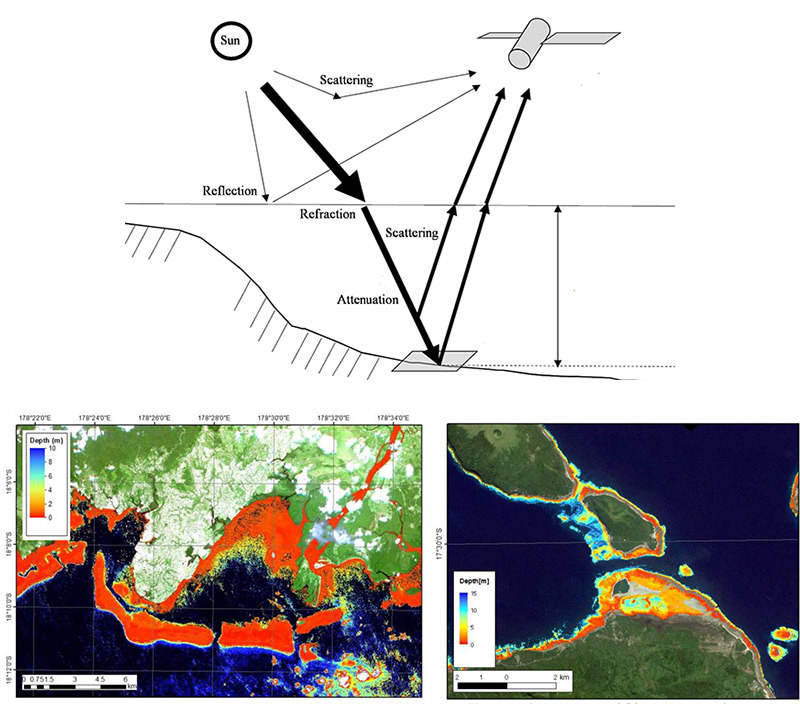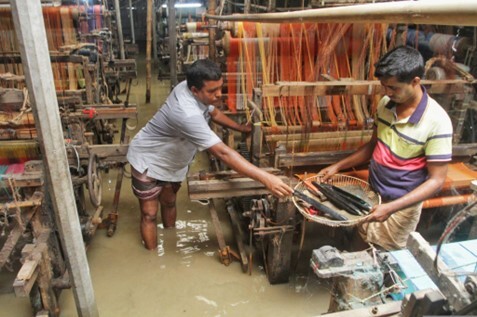
by Ramunas via AdobeStock
Introduction
Climate change projections for the 21st century indicate a high likelihood for the global frequency of tropical cyclones to either decrease or remain unchanged, concurrent with a likely increase in global mean tropical cyclone maximum wind speeds and rain rates (IPCC 2013). The IPCC (2014) further indicates that current and future climate-related drivers of disaster risk for small islands during the 21st century are storm surges and storm waves due to rising sea levels and tropical cyclones.
Fiji, Samoa, and Vanuatu are already facing storm surges and storm waves. Therefore, the Remote Sensing Technology Center of Japan (RESTEC) is conducting a project to develop hazard maps on storm surges and storm waves under future climate conditions in these countries with the cooperation of the Ministry of the Environment of Japan. Researchers from the University of Tokyo and Kanazawa University collaborated to create an offshore wave height dataset (present and future) with climate model projections. A simplified explanation of the project is described as below.
Methods
Firstly, projections were calculated by applying the pseudo global warming experiment with general circulation model output under RCP8.5 conditions (Fig. 1). At the same time, RESTEC applied satellite-based remote sensing technology, such as satellite-derived bathymetry (SDB) to estimate the water depth around coastal areas and satellite-based digital elevation models (DEMs) to produce three-dimensional topographic maps (Fig. 2). SDB and DEM data were utilized as accurate data sources (boundary conditions) for modeling.

Fig. 1 Pseudo global warming experiment for future projections from the Coupled Model Intercomparison Project Phase5 (CMIP5).

Fig. 2 Image of satellite-derived bathymetry (SDB). The satellite can estimate the water depth around coastal areas through observation of light wave spectrums (top). The present water depth around coastal areas (bottom left: Suva/Fiji; bottom right: Takara and Efate/Vanuatu) is estimated with SDB.
Moreover, present and future probabilistic coastal hazards (e.g., storm surge) were compared by running a wave-surge current model under extreme ocean wave conditions calculated by Fig. 1's climate projection and several models (e.g., empirical typhoon model; wave model) using Fig. 2's SDB and DEM data (Fig. 3).

Fig. 3 The calculation flow of the probabilistic coastal hazards (DEM: digital elevation model; GCM: general circulation model; SDB: satellite-derived bathymetry)
Results
Although here is only an introduction of Fiji case, according to future projections, wind speed and significant wave height (2090-2100 mean) will increase by 2% and 13%, respectively, around Suva, the capital city of Fiji, compared with their present values (1990-2000 mean). Fig. 4 shows a comparison of the results for the horizontal distribution of the highest high-water level around Suva caused by a cyclone, considering the influence of future predictions. The storm surge and storm wave risk are expected to increase around the coastal areas close to Suva. Other islands results will be updated in near future.

Fig. 4 Comparison of results for the horizontal distribution of the highest high-water level around Suva caused by a cyclone (left: current climate 1990-2000; right: future climate 2090-2100)
Dissemination
The study team exchanged information with stakeholders in South Pacific Island countries, such as the South Pacific Regional Environment Programme, South Pacific Commission, University of the South Pacific, Japan International Cooperation Agency, National Institute of Water and Atmospheric Research, Asian Development Bank, World Bank, and United Nations Economic and Social Commission for Asia and the Pacific, as well as governmental agencies in Fiji to share the outputs of this study. The goal is to enhance the outcome of each project and to consider how to incorporate the outputs into, for instance, country-specific disaster risk management, urban planning, and environmental legislation.
Related Information
- IPCC (Intergovernmental Panel on Climate Change) 2013, Impacts, Adaptation, and Vulnerability, Working Group II: Chapter 14, Climate Phenomena and their Relevance for Future Regional Climate Change.
- IPCC (Intergovernmental Panel on Climate Change) 2014, The Physical Science basis, Working Group II: Chapter 29, Small Islands.
- RESTEC (Remote Sensing Technology Center of Japan), the University of Tokyo, Kanazawa University, Broadband Tower, Inc. 2017, Developing cost-effective methods to assess the impact of natural hazards (storm surge and storm waves) considering climate change scenarios for Small Island Developing States, with application of satellite-based remote sensing technology, Ministry of Environment, Japan.




